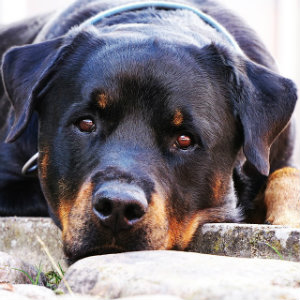Factors Influencing Aggression
There are a few factors which have been found to correlate with aggression in dogs.
Sex
Male dogs are involved in many more attacks than female ones. To be exact, they are over 6 times more likely to bite. Sexually intact dogs are 2.6 times more likely to bite than neutered ones. Female dogs become more aggressive when they are caring for young offspring.
Heredity
If a dog’s parents were aggressive or bred as fighter dogs, it will be more likely to exhibit aggressive or violent behavior.
Home Environment
Dogs with abusive or exploitative owners are more likely to become violent and attack humans and other dogs.
Dog Size And Injury Severity
The numbers don’t lie. Every year, pit bulls account for the vast majority of severe injuries and fatalities from dog attacks. In 2016, they were responsible for 71% of fatalities. This has lead to a serious breed stigma, with certain municipalities even banning the breed. Anyone who’s ever walked a pit bull down the street and encountered fearful reactions from other pedestrians understands this stigma.
However, studies have shown that small and medium-sized dogs are generally more aggressive than large ones. Be that as it may, a large dog (such as a pit bull or rottweiler) raised in a stressful or abusive environment is a powder keg waiting to explode. The combination of an aggressive temperament and raw physical power makes such dogs extremely dangerous.
Large dog breeds may not be more inherently violent than smaller ones, but they are much more likely to inflict serious injuries when they do become violent. People generally view large breeds as more of a threat, so they are more likely to be reported and end up on the dangerous dog list. Owners of large dogs are also much more likely to seek behavioral therapy to reduce the probability of violence.
Common Breeds In Attacks
Now that we’ve considered the factors that contribute to a dog’s propensity for violence, let’s look at the breeds which are most often involved in attacks. Remember that these statistics only account for reported incidents. For example, a minor bite from a Yorkshire Terrier is rarely going to result in injuries serious enough to require medical attention, so such incidents are less likely to be reported.
- Pitbulls - Pit bulls are more likely to exhibit aggressive behavior since many were bred to fight. Many of these dogs are rescued from such stressful environments but still may maintain these tendencies. Pit bulls also show their anger in more subtle ways, which makes it more difficult to spot the warning signs of an attack.
- Rottweilers - Rottweilers are responsible for a large percentage of reported attacks. Like pit bulls, they possess great strength which causes more serious injuries than a bite by smaller breeds would.
- German Shepherds - German Shepherds account for about 28% of all dog bites. They also have a strong biting force of 238 pounds. Their strength makes them an obvious dog of choice for the police and military.
Holding Dog Owners Responsible
As we’ve established, violent dogs are usually the result of poor training and ownership. A dog bite is usually the culmination of months or years of bad habits. Owners who cultivate aggressive behavior by raising a dog in a stressful environment need to be held accountable when another person suffers the consequences.
Many owners give their dogs the opportunity to bite others through negligent behavior, such as allowing the dog to roam unchained, or by allowing it to play roughly with a group of children. It’s important that these owners are held liable in civil court for the numerous expenses and damages which arise after a bite.
More Info For Bite Victims










